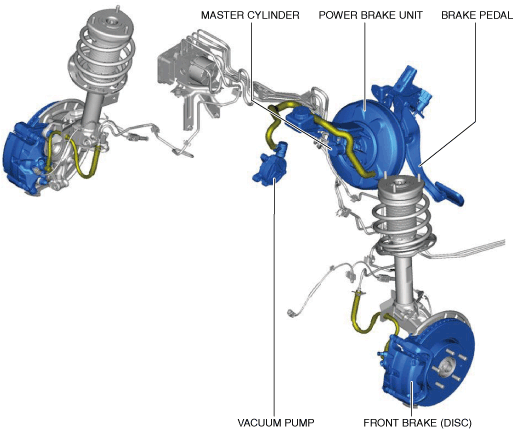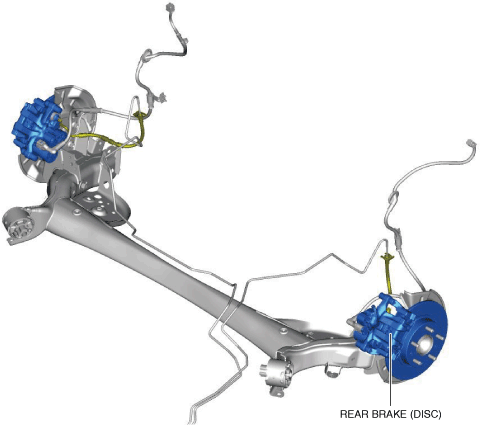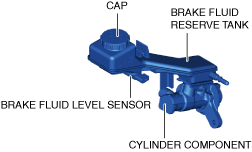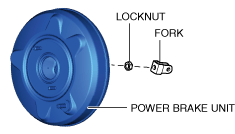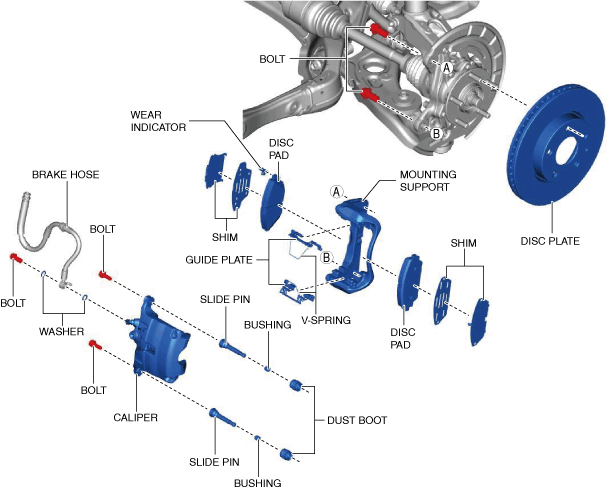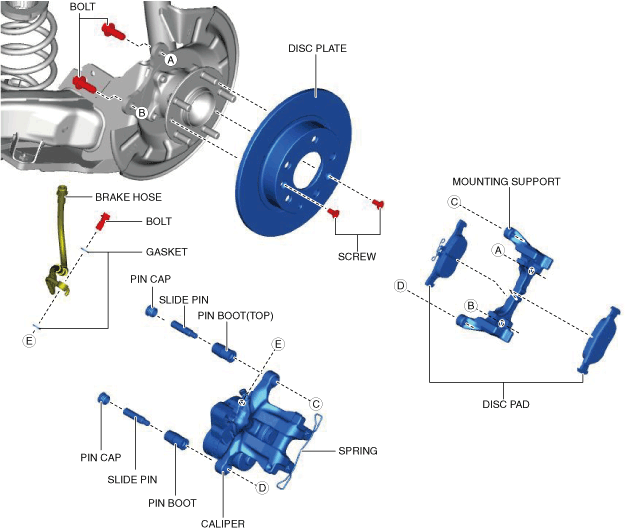CONVENTIONAL BRAKE SYSTEM [(US)]
CONVENTIONAL BRAKE SYSTEM [(US)]
SM2334021
id041100200198
Outline
Structural View
Vehicle front side
am3zzn00006761
|
Vehicle rear side
am3zzn00007909
|
Master Cylinder
Purpose/function
-
• With the adoption of the master cylinder having an enlarged diameter ( 22.22 mm {0.8748 in}), brake pedal operability has been improved.• The diameter of the pipe between the master cylinder and the DSC HU/CM has been increased, improving response during DSC operation.
Construction
-
• Except for the cap and brake fluid reserve tank, the master cylinder cannot be disassembled. Therefore, if there is any malfunction in the interior of the master cylinder, replace the cylinder component without disassembling.
 am3zzn00009856
am3zzn00009856
Operation
-
• When the brake pedal is depressed, the push rod of the power brake unit presses in the master cylinder piston. By pressing in the piston, pressure is applied to the brake fluid to operate the brakes.
Power Brake Unit
Purpose/function
-
• A 10 -inch, single diaphragm type power brake unit has been adopted, achieving compatibility between high braking performance and excellent brake feeling.
Construction
-
• Except for the fork and locknut, the power brake unit cannot be disassembled. Therefore, if there is any malfunction in the power brake unit, replace the power brake unit without disassembling.
 am3zzn00006764
am3zzn00006764
Operation
-
• The depression force of the brake pedal is increased using the vacuum from the vacuum pump, and the force is transmitted to the master cylinder.
Front Brake (Disc)
Purpose/function
-
• Large diameter, ventilated disc type front brakes with a 280 mm {11.0 in} (2WD) or 295 mm {11.6 in} (AWD) diameter and 25 mm {0.98 in} thickness have been adopted, improving braking force and fade resistance.
Construction
am3zzn00007910
|
Operation
-
• When brake fluid is applied, the piston equipped on one side of the caliper is pushed out and the brake pad is pushed against the disc plate. At the same time, the caliper body moves in the direction opposite of the direction in which the piston is pushed out so as to push the brake pad on the other side and generate brake force.
Rear Brake (Disc)
Purpose/function
-
• Large diameter, solid-disc type rear brakes with a 265 mm {10.4 in} diameter and 9 mm {0.4 in} thickness have been adopted, improving braking force and fade resistance.• A brake caliper with an integrated motor has been adopted which enables brake force for hydraulic brake system or the electric parking brake.• For details on the brake force by the electric parking brake, refer to the [ELECTRIC PARKING BRAKE MOTOR GEAR UNIT]. (See ELECTRIC PARKING BRAKE MOTOR GEAR UNIT [(US)].)
Construction
am3zzn00007911
|
Operation
-
• When brake fluid is applied, the piston equipped on one side of the caliper is pushed out and the brake pad is pushed against the disc plate. At the same time, the caliper body moves in the direction opposite of the direction in which the piston is pushed out so as to push the brake pad on the other side and generate brake force.
